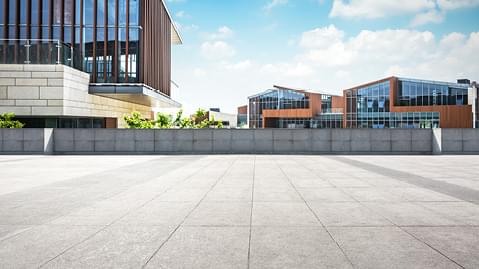Against a backdrop of government-mandated net zero emissions targets by 2050, the socio-economic drivers behind responsible and sustainable capitalism are greater than they have ever been. And yet in the real estate sector, which is widely understood to be both a major contributor and hugely vulnerable to climate change, there is little guidance on how owners and operators might employ effective governance to evaluate and address the environmental impact of their property.
To date, for all the column inches on sustainability and the very real appetite of private firms to adopt and deliver new standards in Environmental, Social and Governance (ESG), effective governance is patchy.
Plain vanilla regulation focuses on the production of Energy Performance Certificates (EPCs), and the subsequent impact of ratings on letting strategies. New rules on corporate reporting make mandatory the detailed reporting of energy usage, energy efficiency and greenhouse gas emissions for applicable corporates, while other property owners and investors have articulated, and sought to demonstrate compliance with, their own industry standards (such as GRESB benchmarking).
Yet as the available data in buildings increases, whether collected for industry benchmarking and/or reported by new technologies, there is increasing focus on the 'G'. And at the very forefront of the industry, owners, occupiers and their property lawyers are putting the jigsaw pieces together and prioritising effective governance as a key to the delivery of sustainable goals with green leases.
What is good governance in real estate?
Good governance takes the data and frames the design and evaluation of a building's operation moving forward to meet targets. It manages the behavioural whims of occupiers and prevents an overly technical analysis getting in the way of practical environmental control.
Good governance supports a whole building system that collects and interprets robust data to generate an effective (and a cost-effective) response to environmental risks and targets in the short and longer term.
Using PropTech to help
Understanding the new opportunities for data gathering is clearly key and in recent years technology has streamlined the way property is occupied, operated and even transacted. 'Bricks and mortar' has been, arguably, a slow adopter of the technological revolution, but there is no doubt it is currently making up for lost time.
As a category, 'PropTech' covers the activities of a large range of businesses busy at that interface where real estate meets technology and there are governance game changers if you look at the top trends in PropTech development. These include:
- Internet of Things (IOT) – this involves installing products and sensors that provide usable data, allowing internet applications to fine-tune maintenance schedules or speed up decision-making to improve energy efficiency.
- Big data collectors – this breed of PropTech collects (often real time) information on ownership and occupation in a way that allows for predictions on asset costs and valuations. It can analyse potential climate impact to expose relevant risks and help with meeting sustainable targets.
- Building Information Modelling (BIM) – created at the outset of a development, smart 3D modelling offers a life-cycle platform for governance. It enables the efficient planning, design, construction and management of buildings, providing cost-effective and sustainable oversight.
- Sharing economy and co-working – the notion of collaborating or sharing space has generated something akin to a revolution in recent years, particularly across the office sector. The technology that enables these spaces to function effectively, and existing spaces to retrofit into shared use, can also be harnessed to understand the impact of people on spaces.
Greening leases
Where effective governance relies on these new tools, harvesting the data they generate is often dependent on the more tried and tested aspects of property management or, more accurately, the documentation that underpins use and occupation.
The rights and reservations existing in leases, for example, can dictate a landlord's ability to install new technology and gather data. In tenanted buildings, there are decisions to be made on costs coverage, service charge impact and potential rentalisation.
While the property industry pivots towards a greening agenda, there remains no such thing as a market-standard 'green lease' although green lease clauses such as those set out in the BBP toolkit would see landlords and tenants agree to co-operate on regular data sharing forums (while complying with data privacy requirements).
Helping to deliver on clients' ESG targets means understanding and enabling a building's practical and technological capacity for effective governance, today and in the future.
Find out more
To discuss the issues raised in this article in more detail, please reach out to a member of our Technology, Media & Communications or Real Estate teams.
Diversity and inclusion data – the view from the Netherlands
We look at the lawful bases for processing diversity and inclusion data in the Netherlands.
1 of 6 Insights
Diversity and inclusion – what's pensions got to do with it?
We look at the importance of diversity and inclusion in the management of pension schemes.
2 of 6 Insights
ESG – diversity data and GDPR
Top tips for GDPR compliance when collecting and analysing diversity data.
3 of 6 Insights
Stand aside CSR… ESG will take it from here!
We look at the importance of diversity and inclusion data as a driver of change.
5 of 6 Insights
Diversity and inclusion reporting – unlocking the data
Partner Helen Farr investigates and discusses the benefits of monitoring diversity and inclusions data in a GDPR-friendly manner
6 of 6 Insights
Return to
